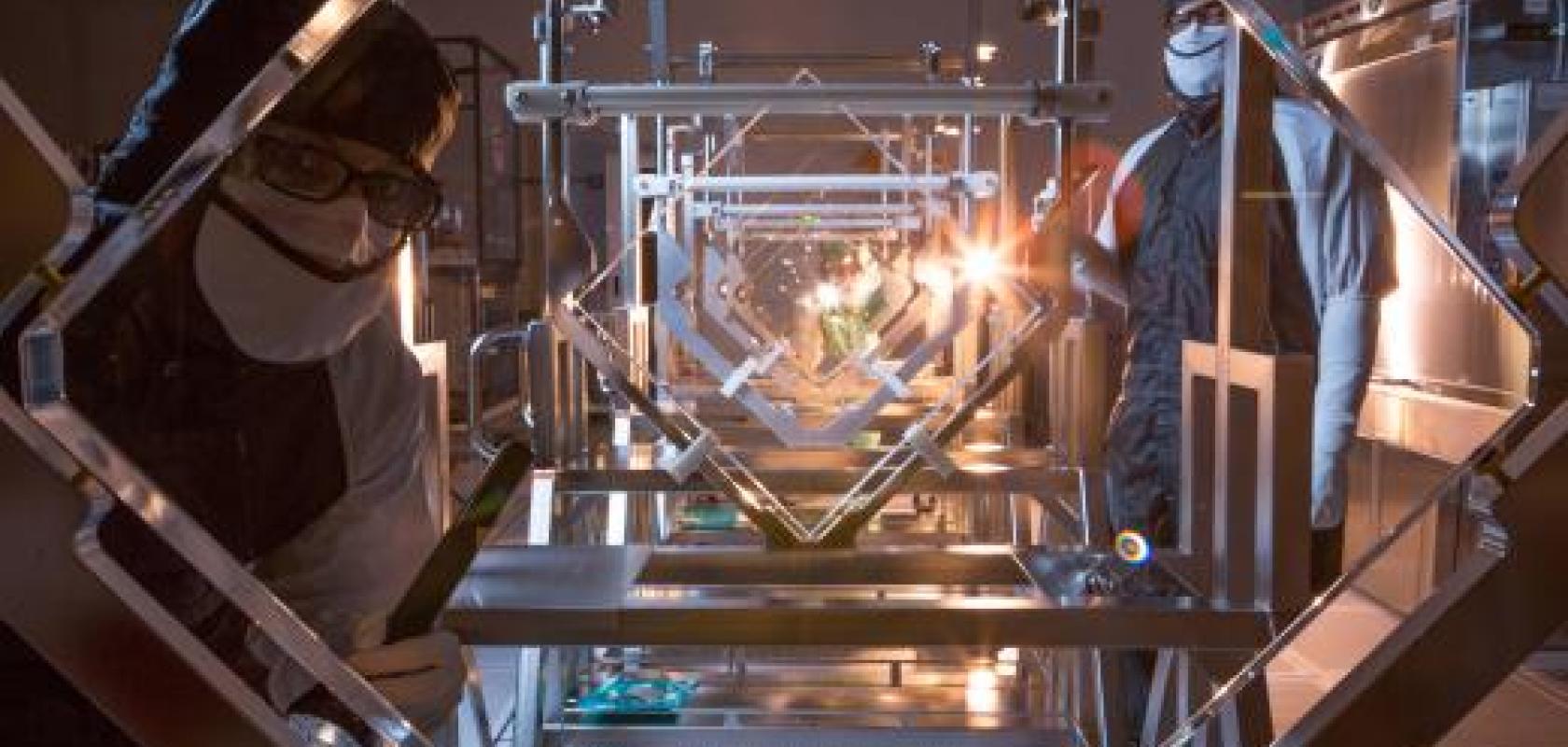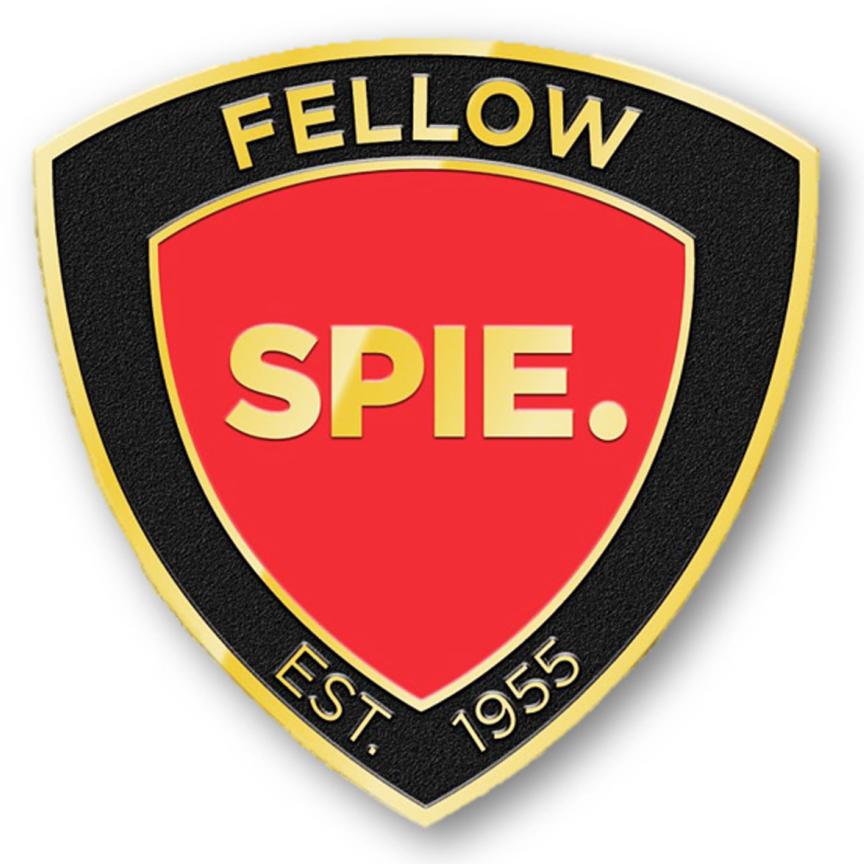Rob Roe details how lasers and optics have enabled recent breakthroughs at the National Ignition Facility.
Recent breakthroughs in nuclear fusion and high energy physics have been made possible thanks to the development of the most powerful laser systems in the world and the innovation in optical components that drive these fusion reactions. One example is Coherent, which supplies custom wedged focus lenses (WFLs) used in the National Ignition Facility's (NIF) ‘Final Optics Assembly.’
In a recent presentation from SPIE Photonics West On Demand, Dr Tammy Ma, an experimental physicist at the National Ignition Facility at Lawrence Livermore National Laboratory, presented research on the development of Inertial Confinement Fusion (ICF) which harnesses lasers to create a fusion reaction.
In her presentation, Dr Ma highlighted how the facility is closing in on larger sustainable fusion reactions thanks to high energy picosecond lasers.
The National Ignition Facility (NIF) is a large laser-based ICF research device, located at the Lawrence Livermore National Laboratory in Livermore, California. The NIF laser is housed in a building the size of three US football fields. It starts with the output from a single, infrared fibre laser and splits it, and amplifies it numerous times to create the 192 separate laser beams.
This past August, a record-breaking shot with 1.3 megajoules of fusion yield was achieved at the NIF at Lawrence Livermore National Laboratory. This experimental result, decades in the making, is a significant breakthrough for laser-driven inertial fusion. This builds on years of experiments, increasing the yield of the fusion experiments and slowly increasing the power and stability of the laser system.
ICF is a technique that has been in development for several decades but advances in technology and research are enabling higher yield fusion reactions. The technique enables nuclear fusion by compressing and heating targets filled with a mixture of deuterium (2H) and tritium (3H). To compress and heat the fuel, energy is deposited in the outer layer of the target using high energy lasers. The beams heat the outer layer, which explodes outward, producing a reaction force against the remainder of the target, which accelerates it inwards, compressing the fuel.
This process creates shock waves that travel inward through the target. Sufficiently powerful shock waves can compress and heat the fuel at the centre, creating a fusion reaction in the process.
In the case of ICF or other practical applications of nuclear fusion, deuterium and tritium isotopes of hydrogen are the fuel for nuclear fusion and the end product is helium.
The helium nucleus weighs less than the initial components and this disparity produces a huge amount of energy. This difference in mass arises due to the difference in nuclear binding energy between the nuclei before and after the reaction.
‘The exothermic energy release, via a fusion reaction, is enormous – 3.3 x 10^11 joules per gram. So a single gram of fusion fuel is equivalent to about 100 barrels of oil. And that is the potential of fusion energy if we can make it work,’ stressed Dr Ma. ‘Fusion energy is attractive for other reasons as well. First of all, it's very safe… In order to initiate fusion, what you have to do is first put a lot of energy into your system,’ Dr Ma continued. ‘So if you ever want to stop a fusion reaction, you just cut off your initial energy source.’
NIF is the world’s most precise and reproducible laser system. It precisely guides, amplifies, reflects, and focuses 192 powerful laser beams into a target about the size of a pencil eraser in a few billionths of a second, delivering more than 2 million joules of ultraviolet energy and 500 trillion watts of peak power. The resulting laser beam NIF is the world’s most precise and reproducible laser system. It precisely guides, amplifies, reflects, and focuses 192 powerful laser beams into a target about the size of a pencil eraser in a few billionths of a second, delivering more than 2 million joules of ultraviolet energy and 500 trillion watts of peak power.
Custom optics from Coherent Tinsley contributes to the NIF by supplying the WFLs used in the ‘Final Optics Assembly’. This is the part of the system that focuses the laser beams down onto the fusion pellet. Each WFL is a 400 mm x 400 mm sized, 7.7 m focal length, off-axis aspheric lens made from high-quality fused silica. Coherent employs a suite of computer-controlled polishing and measurement tools to achieve the extraordinary level of precision NIF demands for these components.
One of the most important considerations in making the WFL's is minimising the chance of optics damage due to absorption of the high-power laser energy. This means avoiding surface contamination at every phase of production. To achieve this impeccable finish the entire polishing process for these components is performed in cleanroom conditions. The final step for the WFL's is a dip in an acid bath to etch off the outer polished glass layer which can hide impurities or sub-surface damage that could degrade the laser’s performance.
Despite all these precautions, the enormous laser energy generated in the NIF system means that the WFL's and other optics have a finite lifetime and are replaced continuously. Coherent Tinsley delivers a steady supply of these to NIF. And, a critical requirement here is that these components don’t vary from unit to unit or overtime.
But, NIF keeps raising the power that their laser generates. So, Coherent needs to continuously improve its fabrication processes to deliver more pristine optical surfaces as the demands on the WFLs increase. ‘We're continuing to push for higher performance for the entire compression, higher laser energy and further improvements in the whole ROM and we are starting to use recurrent design for science experiments,’ stated Dr Ma.
‘The output from this implosion is by far the most powerful energetic driver that we have ever had,’ said Dr Ma. ‘Because we're in this new regime, we get new data that we've never had before and we can then use that to improve our communication capabilities. So this is a very, very exciting time for our field.’
In the future, achieving nuclear fusion could pave the way for clean energy production and energy equality that could reduce – and eventually replace – the world’s dependence on fossil fuels.
‘A large proportion of how we meet that energy demand right now is via coal, oil and natural gas. Of course, these are carbon fuel sources, leading to issues of climate change, global warming,’ said Dr Tammy Ma. ‘What about green renewables wind and solar? Today, they only constitute less than 10 per cent of our energy needs. So going forward, we really want to make sure that we look for sustainable sources of energy to meet those demands.’
Ma also noted that nuclear fusion is carbon-free and sustainable as deuterium is naturally occurring in seawater and Tritium can be produced using lithium. ‘If we can demonstrate fusion to be a viable energy source, no longer will you be reliant on foreign oil imports,’ stated Dr Ma. ‘So it contributes to our energy security and energy equality worldwide because fusion is not reliant on local environmental resources.’


